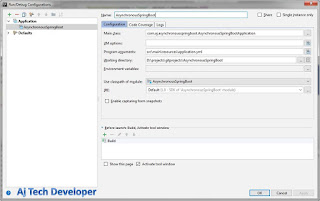Machine Learning Basics
Machine Learning Basics
Introduction
Machine learning is a field of computer science that gives computers the ability to learn without being explicitly programmed. The term "Machine Learning" was coined by Arthur Samuel, an American pioneer in the field of computer gaming and artificial intelligence in 1959 while at IBM.
Machine learning can be broadly classified into the following:
- Supervised Machine Learning: Here the program or model is trained on a set of training examples or historical data which will help it to give accurate results when new data is given.
- Unsupervised Machine Learning: This is purely data driven. The program is given huge amount of data and it should then evaluate patterns and relationships from it.
- Reinforcement Machine Learning: Here the program learns from the environment that it is in through past experiences and then continuously improves itself.
Supervised Machine Learning is classified broadly into the following:
- Regression Machine Learning: Here the value that is being predicted falls somewhere on a continuous spectrum. These models help us with answers of questions such as “How much?” or “How many?”.
- Classification Machine Learning: These models can be used when we require a "Yes" or "No" prediction.
Artificial Intelligence (AI), Machine Learning (ML), Neural Network and Deep Learning (DL)
In simple terms Artificial Intelligence is usually defined as the science of making computers do things that require intelligence when done by humans. AI involves machines that can perform tasks that are characteristic of human intelligence. AI was first coined in 1956 by John McCarthy.
Machine Learning is a subset of AI. Machine Learning models or programs have the ability to modify itself when exposed to more data; i.e. machine learning is dynamic and does not require human intervention to make certain changes. Machine Learning is a way of achieving AI.
Neural Network is a computer system modeled after the human brain.
Deep Learning is a subset of Machine Learning. Deep Learning is the study of artificial neural networks (ANN) and related machine learning algorithms that contain more than one hidden layer. In simple terms, Deep learning is one of many approaches to machine learning. Deep learning was inspired by the structure and function of the brain, namely the interconnecting of many neurons. Artificial Neural Networks (ANNs) are algorithms that mimic the biological structure of the brain.
Types of Artificial Neural Networks:
- Feedforward Neural Network
- Regulatory feedback Network
- Radial basis function
- Recurrent Neural Network (RNN)
- Modular Neural Network
- Physical Neural Network
- Dynamic Neural Network
- Memory Networks
Long Short Term Memory
Long short-term memory (LSTM) units (or blocks) are a building unit for layers of a recurrent neural network (RNN). An RNN composed of LSTM units is often called an LSTM network. A common LSTM unit is composed of a cell, an input gate, an output gate and a forget gate. The cell is responsible for "remembering" values over arbitrary time intervals; hence the word "memory" in LSTM. Each of the three gates can be thought of as a "conventional" artificial neuron, as in a multi-layer (or feedforward) neural network: that is, they compute an activation (using an activation function) of a weighted sum. Intuitively, they can be thought as regulators of the flow of values that goes through the connections of the LSTM; hence the denotation "gate". There are connections between these gates and the cell.
The expression long short-term refers to the fact that LSTM is a model for the short-term memory which can last for a long period of time. An LSTM is well-suited to classify, process and predict time series given time lags of unknown size and duration between important events.
For LSTM Tutorial refer to: Long Short-Term Memory (LSTM) Network for Time Series Forecasting.
Conclusion:
In this post I have explained in simple language, the most frequently used terms in the context of Machine Learning.
Learn the most popular and trending technologies like Machine Learning, Angular 5, Internet of Things (IoT), Akka HTTP, Play Framework, Dropwizard, Docker, Elastic Stack, Spring Boot and Flask in simple steps by reading my most popular blog posts at Software Developer Central.
If you like my post, please feel free to share it using the share button just below this paragraph or next to the heading of the post. You can also tweet with #SoftwareDeveloperCentral on Twitter. To get a notification on my latest posts or to keep the conversation going, you can follow me on Twitter. Please leave a note below if you have any questions or comments.
Learn the most popular and trending technologies like Machine Learning, Angular 5, Internet of Things (IoT), Akka HTTP, Play Framework, Dropwizard, Docker, Elastic Stack, Spring Boot and Flask in simple steps by reading my most popular blog posts at Software Developer Central.
If you like my post, please feel free to share it using the share button just below this paragraph or next to the heading of the post. You can also tweet with #SoftwareDeveloperCentral on Twitter. To get a notification on my latest posts or to keep the conversation going, you can follow me on Twitter. Please leave a note below if you have any questions or comments.



Comments
Post a Comment